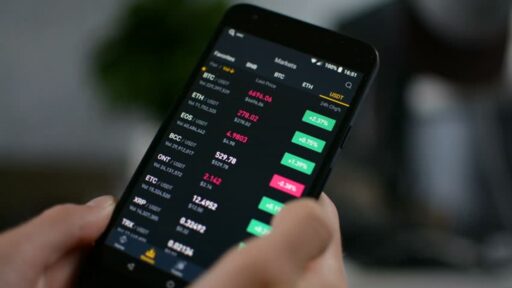The landscape of cryptocurrency trading is evolving with the emergence of no fee crypto exchanges, attracting traders who are looking to maximize their investments without incurring additional costs. This article delves into the fee structures of traditional and no fee exchanges, explores the transparency and hidden costs in crypto trading, examines the impact of regulatory protection on fees, and provides insights into optimizing transactions for cost-effectiveness.
Key Takeaways
- No fee crypto exchanges often offer free trading on certain assets, with platforms like Kucoin, Binance, and Bitstamp leading the way.
- Trading fees can range from 0.1% to 1.25%, and some exchanges offer lower fees for high-volume traders or owners of the exchange’s tokens.
- While some exchanges lack fee transparency, platforms like Coinbase display costs directly on the trade screen, enabling informed decisions.
- Regulatory protection can influence fee structures, with some exchanges balancing lower fees with KYC procedures to offer consumer protection.
- Decentralized exchanges may offer cost efficiency but can be less convenient, and traders should consider withdrawal fees and transaction speeds.
Understanding the Fee Structure of Crypto Exchanges


The Impact of Trading Fees on Transactions
Cryptocurrency exchange fees are a critical aspect of trading digital assets. Trading fees can significantly affect the profitability of transactions, especially for frequent traders or those trading large volumes. These fees vary widely among platforms and can be structured in different ways, such as flat fees, percentage-based fees, or a combination of both.
For example, some exchanges charge a flat fee per transaction, while others may implement a maker-taker model, where fees differ for those who create liquidity (makers) and those who take liquidity (takers). Additionally, certain platforms offer tiered fee structures that incentivize high-volume trading with lower fees.
It’s essential to understand the total cost of trading, which includes not only the trading fees but also potential withdrawal and deposit fees, as well as mining fees when applicable.
Here’s a brief overview of how fees can be structured on various platforms:
- dYdX: A flat trading fee with additional mining fees charged at multiple stages.
- Coinbase: A percentage-based fee for trades over $200, with costs visible at the trade screen.
- Gemini: Fees vary by platform and amount, with a specific fee schedule for desktop and mobile.
- KuCoin: A tiered maker-taker fee model with discounts for holding exchange tokens.
Additional Costs Beyond the Trade
While the trading fee is often the most visible cost associated with cryptocurrency transactions, it’s just the tip of the iceberg. Additional costs can accumulate, impacting the overall affordability of a platform. For instance, when trading on certain platforms, users encounter mining fees at multiple stages: deposit, trade, and withdrawal. These fees, although smaller than the main trading fee, add up quickly.
Consider the example of a platform charging 0.001 BTC per trade with an extra mining fee of 0.0003 BTC, which is applied thrice. The total mining fee thus becomes 0.0009 BTC. Additionally, a withdrawal fee of 0.0003 BTC, although below the industry average, further adds to the cost. Here’s a breakdown of these fees:
| Fee Type | Cost (BTC) |
|---|---|
| Trading Fee | 0.001 |
| Mining Fee | 0.0009 |
| Withdrawal Fee | 0.0003 |
Margin trading introduces another layer of complexity, with platforms like Kraken requiring adherence to specific conditions and obligations. These costs are not always transparent and can vary based on the total value of the margin extended for your trade.
It’s essential for traders to be aware of these additional costs and consider them when evaluating the affordability and transparency of a crypto exchange.
Understanding fee structures and transparency in crypto exchanges is crucial for traders. Compare features, fees, and security to make informed decisions and manage trading costs effectively.
Fee Variations for Advanced Trading Strategies
Advanced traders often engage in strategies such as margin and futures trading, which come with their own fee structures. Understanding these variations is essential for maintaining profitability. For instance, some platforms may offer lower fees for higher volume trades, incentivizing frequent trading and larger transactions.
- Margin trading may involve higher fees due to the increased risks and capital provided by the exchange.
- Futures trading can have a different fee schedule, often based on the contract size and the term of the future.
It’s important for traders to review the fee schedules for these advanced options to ensure they align with their trading strategies and risk tolerance.
Cryptocurrency exchanges must adapt UX for all users. Exchanges play a vital role in the digital currency landscape, and part of that role includes providing clear information on fees for various trading strategies. This transparency allows traders to make informed decisions and optimize their trading profitability.
Navigating No-Fee and Low-Fee Trading Platforms


Identifying Truly Free Trading Opportunities
In the quest for truly free trading opportunities, it’s essential to scrutinize the offerings of various platforms. While some exchanges boast no fees, they may recoup costs through wider spreads or offer limited functionality. Here’s a quick checklist to help you identify genuinely free trading platforms:
- Verify the absence of trading fees for the types of transactions you intend to make.
- Check for non-trading fees, such as withdrawal or inactivity charges.
- Assess the spread between buy and sell prices to ensure it’s competitive.
- Consider the range of assets available; a platform with no fees but limited options may not serve your needs.
- Look into the user experience, security measures, and customer support quality.
Remember, a no-fee structure doesn’t guarantee the best overall value. Factor in all aspects of the trading experience before making a decision.
Choosing a cryptocurrency trading platform involves understanding fees, customer support, and key features like security and user experience. Consider trading style and preferences for the best fit.
Comparing Low Fee Exchanges and Their Asset Offerings
When selecting a cryptocurrency exchange, traders often prioritize low fees, but it’s equally important to consider the diversity of assets available. The range of cryptocurrencies offered can significantly influence a trader’s ability to diversify their portfolio.
- OKX: Offers a starting fee of 0.6% with an extensive selection of over 340 assets.
- Binance: Boasts a fee structure starting from 0% and provides access to more than 600 cryptocurrencies.
- Kucoin: Also starts from 0% fees, featuring a vast array of over 750 digital assets.
While low fees are enticing, they should not be the sole factor in choosing an exchange. The platform’s user experience, payment methods, and incentivized discounts for high volume trading or ownership of exchange tokens are critical considerations.
Remember, some platforms may offer lower fees for high-volume traders or for those holding the exchange’s own cryptocurrency. For instance, Binance reduces commissions for traders with significant monthly volume or for those owning Binance Coin. Always explore the full spectrum of benefits each platform offers to find the most advantageous trading environment.
The Role of Volume and Exchange Tokens in Reducing Fees
Crypto exchanges often incentivize high-volume trading with a tiered fee structure. The more you trade, the less you pay per transaction. For instance, Bitvavo starts with a trading fee of 0.25%, which can decrease to zero for traders moving large volumes. Similarly, Binance reduces fees for those holding Binance coin or surpassing $1 million in monthly trades.
Exchange tokens play a pivotal role in fee reduction strategies. Holding a platform’s native token often grants traders discounts on transaction fees. For example, KuCoin offers lower fees for users with a certain balance of KCS, their native token. This symbiotic relationship encourages both the use of the token and increased platform loyalty.
It’s essential to understand the nuances of fee structures on various platforms to optimize your trading costs effectively.
Here’s a quick overview of how volume and exchange tokens can impact fees:
- High trading volume can lead to significantly lower fees.
- Owning exchange tokens may provide additional discounts.
- Some platforms offer zero fees at the highest volume tiers.
- Always review the exchange’s fee schedule to identify potential savings.
The Transparency and Hidden Costs in Crypto Trading


Understanding the Spread and Its Impact on Costs
In the realm of cryptocurrency trading, the spread is the difference between the buy (bid) and sell (ask) price of an asset. A narrower spread often signifies a more liquid market, where traders can execute orders without significantly affecting the price. Conversely, a wider spread can lead to higher costs for traders, as they may have to buy at a higher price or sell at a lower price than anticipated.
The spread is a hidden cost that is not always immediately apparent, unlike direct trading fees. It’s essential to consider the spread when evaluating the cost-effectiveness of a trading platform. Here’s a quick look at how spreads can vary:
| Cryptocurrency | Typical Spread |
|---|---|
| BTC | 0.9% – 1.3% |
| ETH | 0.9% – 1.3% |
| Other Crypto | Higher than BTC/ETH |
| Fiat Currency | 0.2% |
The spread is a critical factor in the overall cost of a trade and can have a significant impact on profitability, especially for frequent traders.
Understanding the spread is crucial for traders to make informed decisions and manage their trading costs effectively. It’s a key component of the trading environment that can influence investment strategies and potential returns.
The Importance of Visible Fee Schedules
The clarity of fee schedules on crypto exchanges is paramount for traders to make informed decisions. Visible fee schedules empower users to understand the exact costs associated with their trades, avoiding any unpleasant surprises. For example, Coinbase displays costs on the trade screen, ensuring users are aware of fees before executing a trade. Similarly, Bitvavo’s transparent fee structure, which can decrease to zero based on trading volume, is a testament to the value of clear pricing.
Transparency in fee schedules not only fosters trust between the exchange and its users but also enables traders to calculate potential profits and losses more accurately.
Here’s a brief overview of how two popular exchanges structure their fees:
| Exchange | Trade Amount | Fee |
|---|---|---|
| Coinbase | Over $200 | Percentage-based |
| Gemini | $50 – $200 | Up to $2.99 |
| Gemini | Over $200 | 1.49% |
Note that additional fees may apply for services such as withdrawals, funding, or crypto conversions. It’s crucial for traders to review these schedules carefully to fully grasp the cost implications of their trading activities.
How Anonymity and KYC Affect Fees and Limits
The landscape of cryptocurrency trading is increasingly influenced by identity verification processes. Most exchanges now mandate KYC (Know Your Customer) protocols, requiring traders to provide personal information and photo ID. This shift towards regulation is designed to protect users from fraud but can also impact the fees and limits associated with trading.
For those seeking anonymity, there are still platforms that offer limited trading without stringent KYC requirements. However, these often come with trade-offs such as lower withdrawal limits or potentially higher fees to compensate for the increased risk to the exchange.
While anonymity can be appealing, it’s important to weigh the benefits against potential limitations and costs.
Here’s a quick overview of how KYC levels can affect your trading experience:
- No KYC: Higher withdrawal limits, but potentially less secure and higher fees.
- Partial KYC: Moderate withdrawal limits and fees, with some personal information required.
- Full KYC: Lower fees, higher withdrawal limits, and enhanced security measures.
Remember to consider exchange security, fees, liquidity, and user experience when trading cryptocurrencies. Research thoroughly and prioritize longevity, historical performance, and competitive rates for successful trading.
The Influence of Regulatory Protection on Exchange Fees


How Regulation Affects Fee Structures
As regulators start to treat cryptocurrencies akin to traditional securities, the fee structures within crypto exchanges are subject to change. Regulation makes crypto markets more efficient, shaping how fees are applied and disclosed. This alignment with traditional financial market standards can lead to a more predictable and standardized fee schedule for users.
- Trading Fees: Often a flat percentage or varying rates for makers and takers.
- Transparency: Regulatory oversight may enforce clear disclosure of fees.
- Volume Discounts: High volume traders or token holders may receive reduced fees.
Regulatory measures can ensure that fee structures are fair and transparent, providing a level playing field for all market participants.
However, the crypto community often debates the applicability of traditional financial regulations to cryptocurrencies. The unique nature of digital assets requires a nuanced approach to regulation, one that balances the need for consumer protection with the innovative spirit of the crypto market.
The Balance Between Anonymity and Regulatory Compliance
In the world of cryptocurrency trading, the quest for anonymity often clashes with the demands of regulatory compliance. Most exchanges require identity verification, aligning with regulations to combat fraud and money laundering. However, this can be a deterrent for those seeking privacy.
While some traders prioritize anonymity, it’s important to recognize the security and legitimacy that comes with regulatory adherence.
For those willing to sacrifice some level of anonymity, there are platforms that offer a middle ground, providing lower withdrawal limits without full identity verification. Here’s a quick comparison of leading no KYC exchanges:
| Crypto Exchange | Fees | No. of Assets |
|---|---|---|
| Uniswap | 0.3% | 900+ |
| Kucoin | From 0% | 750+ |
| Bybit | From 0% | 100+ |
Remember, the choice of exchange should be guided by more than just the privacy offered. It’s crucial to consider a guide to selecting the best crypto exchange: fees, user experience, security, liquidity, and innovations for a cost-effective and secure trading experience.
Choosing Exchanges with Consumer Protection in Mind
When selecting a cryptocurrency exchange, it’s crucial to consider how regulations impact exchange choice. Regulators mandate consumer protection in crypto businesses, ensuring that compliance is synonymous with trust and stability. This affects not only the security of your funds but also the range of services available to you.
- Stay informed about the regulatory environment of exchanges.
- Align your choice with your investment goals and risk tolerance.
- Remember that compliance can also mean more stringent KYC procedures.
By prioritizing exchanges that adhere to regulatory standards, you’re opting for a platform that values your security and aims to provide a stable trading environment.
Ultimately, the decision should reflect your personal priorities and goals. Choose an exchange that aligns with your requirements, keeping in mind that consumer protection is a significant factor in ensuring a safe and reliable trading experience.
Optimizing Transactions: Speed vs. Cost


The Trade-Off Between Fast Transactions and Low Fees
In the world of cryptocurrency trading, speed can come at a premium. While some traders prioritize rapid transaction times, others focus on minimizing costs. The average Bitcoin transaction time is reported to be between 10-60 minutes, but this can vary widely depending on network congestion and the fees paid for transaction processing.
- Low Fee Exchanges: Offer fees ranging from 0.1% to 1.25%, with some platforms providing further discounts based on trading volume.
- Mining Fees: Typically charged multiple times during the deposit, trade, and withdrawal process, adding to the overall cost.
- Withdrawal Fees: Can be less than the industry average, providing a slight relief in overall expenses.
While no single exchange offers the perfect balance, understanding the nuances of each platform’s fee structure can lead to more informed decisions and potentially lower costs over time.
It’s crucial to consider both the speed of transactions and the associated fees. Some exchanges offer lower fees but may take longer to process transactions, while others provide faster services at a higher cost. Traders must weigh their priorities and choose accordingly.
Decentralized Exchanges: Cost Efficiency at the Expense of Convenience
Decentralized exchanges (DEXs) offer a different paradigm in crypto trading, prioritizing security and adherence to the decentralized ethos of cryptocurrencies. Users take on more responsibility, as they are involved in verifying transactions, akin to the operations of blockchain networks. This model enhances accountability and transparency, ensuring the exchange’s continuous operation without a central authority.
However, DEXs often lack the user-friendly features of their centralized counterparts. For instance, direct fiat to crypto conversions are typically not available, requiring users to already possess cryptocurrencies or to use a centralized exchange for initial purchases. The trade-off is clear: while DEXs provide cost efficiency through lower fees and reduced counterparty risk, they do so at the cost of convenience and accessibility.
- Security: Enhanced by the distributed nature of DEXs.
- Cost: Generally lower fees compared to centralized exchanges (CEXs).
- Convenience: More complex user experience, with no direct fiat-to-crypto transactions.
- Accessibility: May require prior cryptocurrency ownership or use of a CEX for initial conversion.
While centralized exchanges offer convenience and diverse services, they come with risks concerning security, cost, and asset custody. Users should balance the benefits of DEXs against these potential drawbacks to make informed decisions about where to trade.
Strategies for Minimizing Withdrawal Fees
Minimizing withdrawal fees is crucial for traders looking to maximize their returns. Carefully selecting an exchange with low or no withdrawal fees can significantly reduce costs. Here are some strategies to consider:
- Compare fees: Regularly review and compare the withdrawal fees across different exchanges, as they can vary widely.
- Consolidate transactions: Group your withdrawals to minimize the number of transactions and associated fees.
- Use exchange tokens: Some platforms offer reduced fees when using their native tokens for transactions.
While some exchanges boast low trading fees, they may compensate by charging higher withdrawal fees. It’s essential to read the fine print and understand the complete fee structure before committing to an exchange.
Remember, withdrawal fees often depend on the type of cryptocurrency. For example, withdrawing Bitcoin might incur a different fee compared to Ethereum or other altcoins. Here’s a succinct table illustrating the withdrawal fees for two popular cryptocurrencies across various exchanges:
| Exchange | Bitcoin (BTC) | Ethereum (ETH) |
|---|---|---|
| Exchange A | 0.0005 BTC | 0.005 ETH |
| Exchange B | 0.0003 BTC | 0.003 ETH |
| Exchange C | No fee | 0.002 ETH |
By employing these strategies and staying informed about the fee structures, traders can effectively minimize the impact of withdrawal fees on their investments.
Conclusion
The emergence of no-fee and low-fee crypto exchanges marks a significant shift in the digital asset trading landscape, offering traders the opportunity to maximize their investments without the burden of excessive costs. While truly fee-free trading is rare, with many platforms only waiving fees on specific assets or services, the trend towards cost efficiency is clear. Users must remain vigilant, however, as additional fees may apply for advanced trading strategies, quick buy features, or withdrawal processes. By educating themselves and carefully selecting exchanges that align with their trading volume and strategies, investors can navigate this evolving market to find the most economical and transparent platforms. As the industry continues to mature, the balance between regulatory protection, user-friendliness, and cost-effectiveness will become increasingly important for both novice and experienced traders alike.
Frequently Asked Questions
What is the best no-fee crypto exchange?
While truly free crypto exchanges are rare, some offer free trading for specific assets. For example, Kucoin and Binance offer 0% fees on certain assets, and Bitstamp also provides free trading options for a limited number of assets.
What should I consider when looking for low withdrawal fees?
When moving your crypto, search for exchanges that have little to no withdrawal fees. This can significantly reduce the cost of transferring your assets out of the exchange.
How do trading fees vary for advanced trading strategies?
Users engaging in advanced trading strategies, such as margin trading, will incur additional fees for borrowing money. It’s important to understand these extra costs before participating in complex trades.
What is the crypto exchange with the lowest fees?
eToro is known for its low fees, charging a flat 1% fee added to the market price of each digital asset. This fee is included in the spread, making the costs transparent and predictable.
How can owning exchange tokens reduce trading fees?
Some exchanges offer reduced trading fees for users who hold their native cryptocurrency tokens. For example, Binance provides discounts on commission fees for users holding Binance Coin or trading large volumes.
What is the importance of fee transparency on crypto exchanges?
Transparent fee structures help users understand the exact costs associated with their trades. Exchanges like Coinbase display fees on the trade screen, ensuring users know what they are paying before executing a trade.






